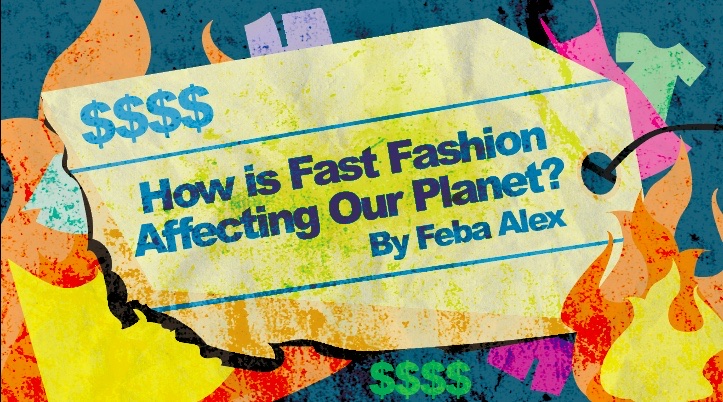You may be hearing the phrase “Fast Fashion” now more than ever. The phrase was initially popularized by the New York Times in the 1990s to refer to the retail brand Zara’s capacity to move a garment from the design stage to being sold in stores in as quick as 15 days.
Today, the phrase “fast fashion” refers to “cheap and low-quality clothing that is rapidly produced and cycled in and out of the market quickly to meet new trends,” infiltrating our environment with harmful textile waste in the process. What was previously perhaps viewed as a victory and achievement is now stressing and damaging our planet. Some Fast fashion brands with a significant influence include Zara, UNIQLO, Forever 21, Fashion Nova, SHEIN, and more.
Every year, 80 billion pieces of new apparel are purchased globally, with higher-income people producing 76% more textile waste than those with lower income. The majority of these products are made in China and Bangladesh, whereas the United States and European countries purchase more apparel than any other country.
However, instead of pointing fingers, let’s look at how the apparel industry is damaging our environment and what we can do differently to continue to be able to buy trendy, inexpensive, and ecologically conscious clothing.

“Dharavi clothes factory” by bbcworldservice is licensed under CC BY-NC 2.0
Top 4 Ways Fast Fashion Harms the Environment?
1. Textile Waste:
Purchasing and disposing of low-quality clothing generates an estimated 92 million tons of textile waste per year, with this figure expected to rise to 134 million tons by 2030. As these textile waste landfills start to decompose and disintegrate, they release poisonous gases and chemicals that contaminate the air, water, and soil.
2. Carbon Emissions:
According to the UN Environment Program, the fashion industry is responsible for up to 10% of world carbon emissions and close to 20% of global wastewater, with around 93 billion cubic meters coming from textile dyeing.
3. Hazardous Conditions and Disease:
Workers and child laborers producing fast fashion clothing earn low insufficient salaries while working in hazardous conditions that cause life-threatening diseases such as lung disease and cancer. Additionally, it has turned into a health hazard for those living near textile landfills and manufacturing facilities.
4. Synthetics and Toxins:
Fast Fashion clothing is usually made with non-biodegradable synthetic fabrics that produce microplastic and require significant quantities of water and pesticides to manufacture, which remains in the environment and doesn’t degrade naturally. Toxic dyes are also used excessively and often released into local water systems which are then consumed by households, animals, and plants.
Top 4 ways you can preserve the planet and end the fast fashion crisis?
1. Invest In Quality Over Quantity:
Avoid buying too many cheap, short-lived, disposable clothing. Instead, try to invest in long-lasting, sustainable fashion rather than chasing after passing trends. If you have a tear in your clothing, you can frequently return it to the retailer for a fast stitch or watch a quick video on how to repair clothes. It’s easy!
2. Shop Secondhand:
To reduce your impact on the environment, visit your local thrift-store or shop at online resale stores like Poshmark or Thread Up. Thrift store merchandise are also eventually shipped to foreign countries’ landfills, so support your local stores instead of buying brand new.
3. Go Natural:
Purchase clothing made from biodegradable, sustainable materials. For example, threads made from natural cellulosic or protein fibers last longer, are degradable and healthier for the environment. Avoid products made of polyester, nylon, spandex, and acrylic, which are made using fossil fuels and eventually break down into microplastic.
4. Choose Ethical Brands:
Invest in environmentally conscious brands that are transparent, have high production standards, and can prove their eco-friendliness. Brands to trust include Patagonia, Pact, and Honest Basics, to name a few.

“clothing & pocket light” by Emiliano Grusovin is licensed under CC BY-NC-SA 2.0
Further Ponderings
Are we abusing nations like Ghana and Chile by dumping our textile waste on their soil, as well as China, by having them produce fast fashion all for our fleeting fun nights out, shopping addiction, desire to keep up with trends, or feeling under pressure from social media and societal norms?
Are we attempting to impress others at the expense of our world and its people? Every year, the typical American household discards about 80 pounds of clothing. Consider whether you want to be a part of this statistic. It is our duty to encourage change in the fashion industry and take steps to preserve our planet, but it begins with you.

Leave a Reply
You must be logged in to post a comment.